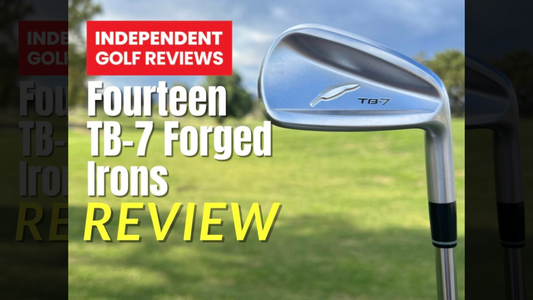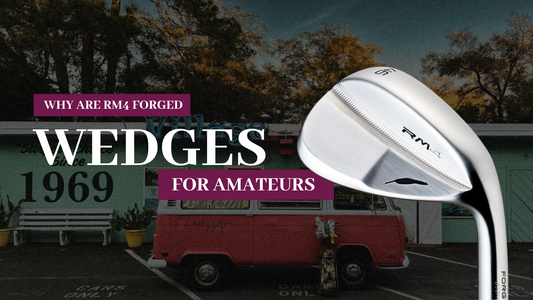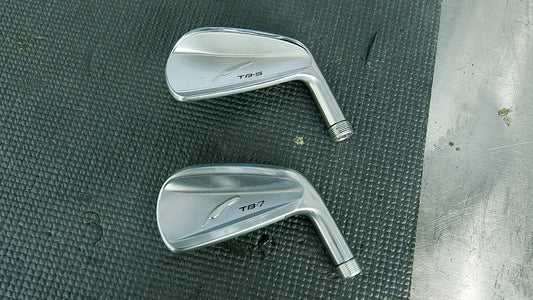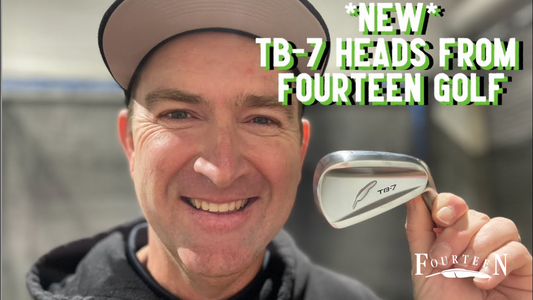Top competitive amateur golfers do not compromise on choosing the right equipment for them. Fourteen Golf had the pleasure of hosting this discussion to learn how they think about wedge selection and help you determine which RM-4 lofts and soles are best for your game.

Takeshi Tashiro, left, born August 21, 1955, belongs to Tomei Atsugi Country Club. He won the 2015 Tokyo Senior Golf Championship and the 2018 Hochi Senior Ama Golf Championship. The encounter with Fourteen was triggered by Ikeda, a public relations officer who competes with the club. He has been using it for more than 15 years since "MT-28V2".
Kunio Kawasaki, right, born December 25, 1972, belongs to Ryugasaki Country Club. Top amateur representing the Kanto area, which boasts multiple appearances in Japan Amateur and Japan Mid-Ama. He has been using Fourteen products since his first "MT-28" for about 20 years.

Choose the best sole for your wedge game advantage
Mr. Kawasaki: The new work "RM-4" has finally arrived. The new shape "Step Blade" that changes the thickness in the toe heel direction is installed, and the appearance is also novel "RM-4", but after all the wedges of Fourteen are beautiful as a whole.
Mr. Tashiro: After we have been using Fourteen wedges for many years, we can no longer use anything else. At first glance, the "RM-4" looks a little larger, but the beautiful Fourteen-like form is still alive.
Mr. Kawasaki: The first impression of hitting "RM-4" is that the hit feeling is very soft. Not only is the material made of soft iron (S25C), but the image is that the center of gravity is well at the point you want to hit. The sand wedge (56 to 60 degrees) is on the heel side, and the low loft wedge (48 to 54 degrees) is on the toe side. I think that hitting with the core well leads to a soft feel.


Mr. Tashiro: Isn't the spin performance more sophisticated as well as the good feel of hitting?
Mr. Kawasaki: Yes. I got the impression that 56, 58, and 60 degrees "stop more". Fourteen wedges are originally patented exclusively for spin performance, but they feel more sophisticated.
Mr. Tashiro: I think one of the reasons is that the shape of the sole has improved. Especially the sharpness of the crescent-shaped "H" sole is amazing. You can make contact as if you were cutting a ball, so you can get a lot of spin. It may be just right as if you were aiming at the base of the pin. The face can be opened from the rough to make it easy to pull out, and the intended soft ball can be hit to stop the ball. It is excellent in ball operation and comfortable to use.

Mr. Kawasaki, I agree. In my case, the hand first is strong and the club is put in from the top, so the "S" sole, which is easy to bounce effectively, matched. Even if I put the head in a little, I felt the tolerance of the sole that can stably carry the ball to the target position and stop it.
Mr. Tashiro: We athletes are required to be responsive in any green condition. The stable spin shot of "RM-4" is easy to make regardless of the condition of distance.
Mr. Kawasaki: I refine the short game by choosing the voluminous round sole "S", the crescent-shaped "H" behind the toe heel, and the appropriate type from the two soles according to the shot style. I feel like I can call it.
Mr. Tashiro: Yes. Recently, there are many models of wedges that have a lineup of sole types, and the importance of sole fitting is being recognized, but the "RM-4" covers all with two soles, "S" and "H". Above all, it's good to be able to choose in an easy-to-understand manner. Only the sole, which can be said to be the life of wedge performance, I want to make sure to select the optimum type that matches my shot style.


S sole
With a voluminous sole as a whole, the head behavior is easy to stabilize. "For me, who has a strong hand first and a sharp angle of incidence, the bounce effect was properly obtained." (Mr. Kawasaki)

H sole
The sole with a bold cut at the rear in the toe-heel direction corresponds to various techniques. "Even if you open the face, the bounce is constant. You can make sharp ball contacts" (Mr. Tashiro)
The low loft wedge (46-54 degrees) of the "RM-4" has an optimal spin (center of gravity) design for each count, and has excellent operability that "does not return too much" even during a full shot, making it easy to create the desired sense of distance.
Challenge the setting of 4 wedges!
Now that iron lofts are becoming stronger, Kawasaki says he is worried about the gap between short game distances and will finally try a set of four wedges.
"For the 42 degree 9I and 46 degree PW, I used to set with two wedges of 52 degree and 58 degree, but if the count distance is 20 yards, a halfway distance is likely to remain and I make a mistake. I have fixed this by removing 5W which I rarely use, adopted 3 low loft wedges of 46 degrees, 50 degrees, 54 degrees, set 4 "RM-4" to connect to 58 degrees, distance. We will close the gap to 10 yards to complete the short game that is the key to score making. "
No matter which lofts are best for your game, we encourage you to read more about the two easy to understand sole options and enjoy the reliable spin performance.
In Summary:
S GRIND
An all-purpose grind particularly suited for full shots and shots hit with a square face. Ideal for players who prefer a traditional wedge sole
Available in 46, 48, 50, 52, 54, 56, 58, 60
H GRIND
designed for players that like to rotate the club face open and closed to manufacture shots around the green. Ideal for players with a shallower, more sweeping swing type who play shots from a variety of clubface positions.
Available in 56, 58, 60
Thank you Chiba Country Club Umesato Course for hosting this discussion.
Read more about the new RM-4 Wedge.






